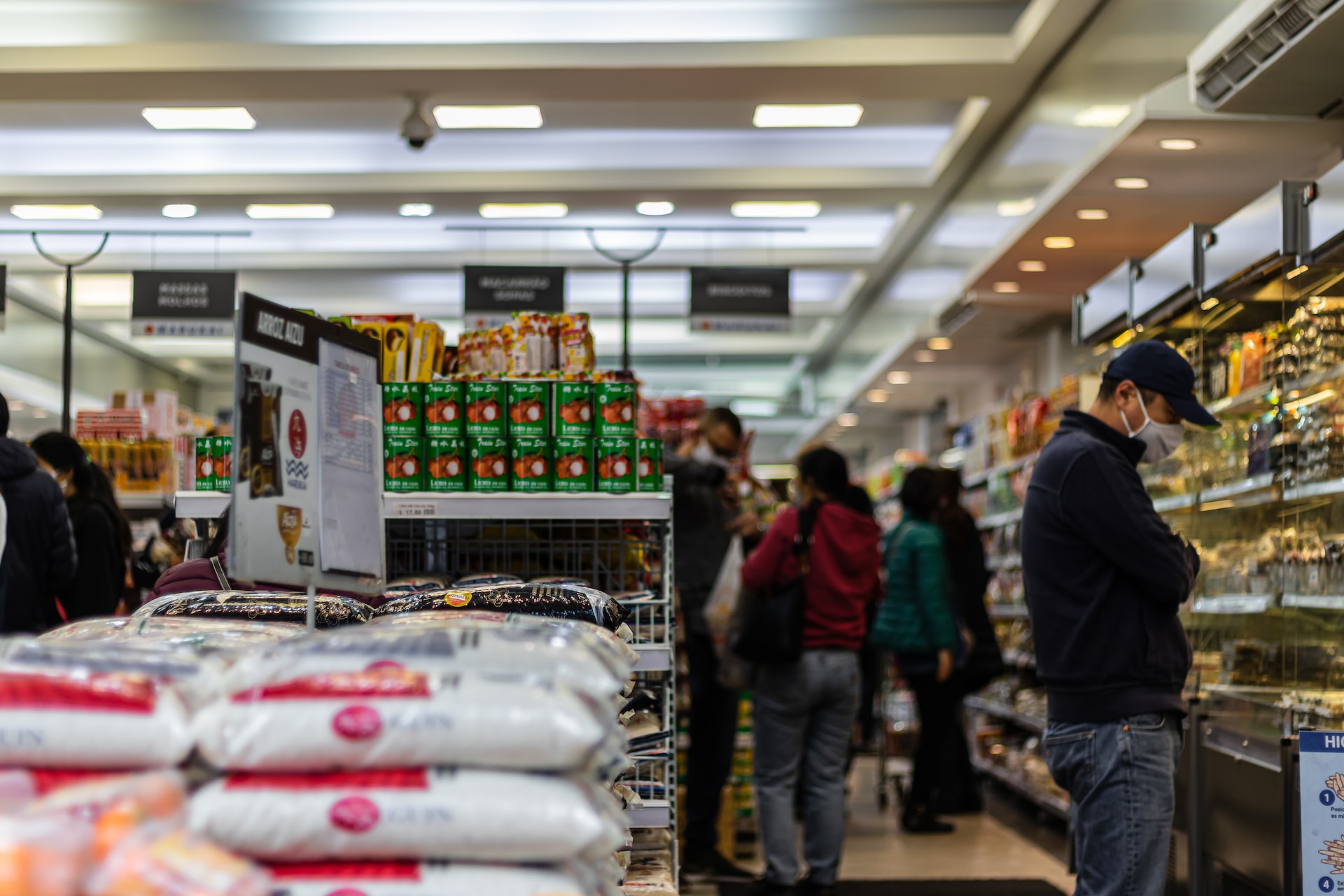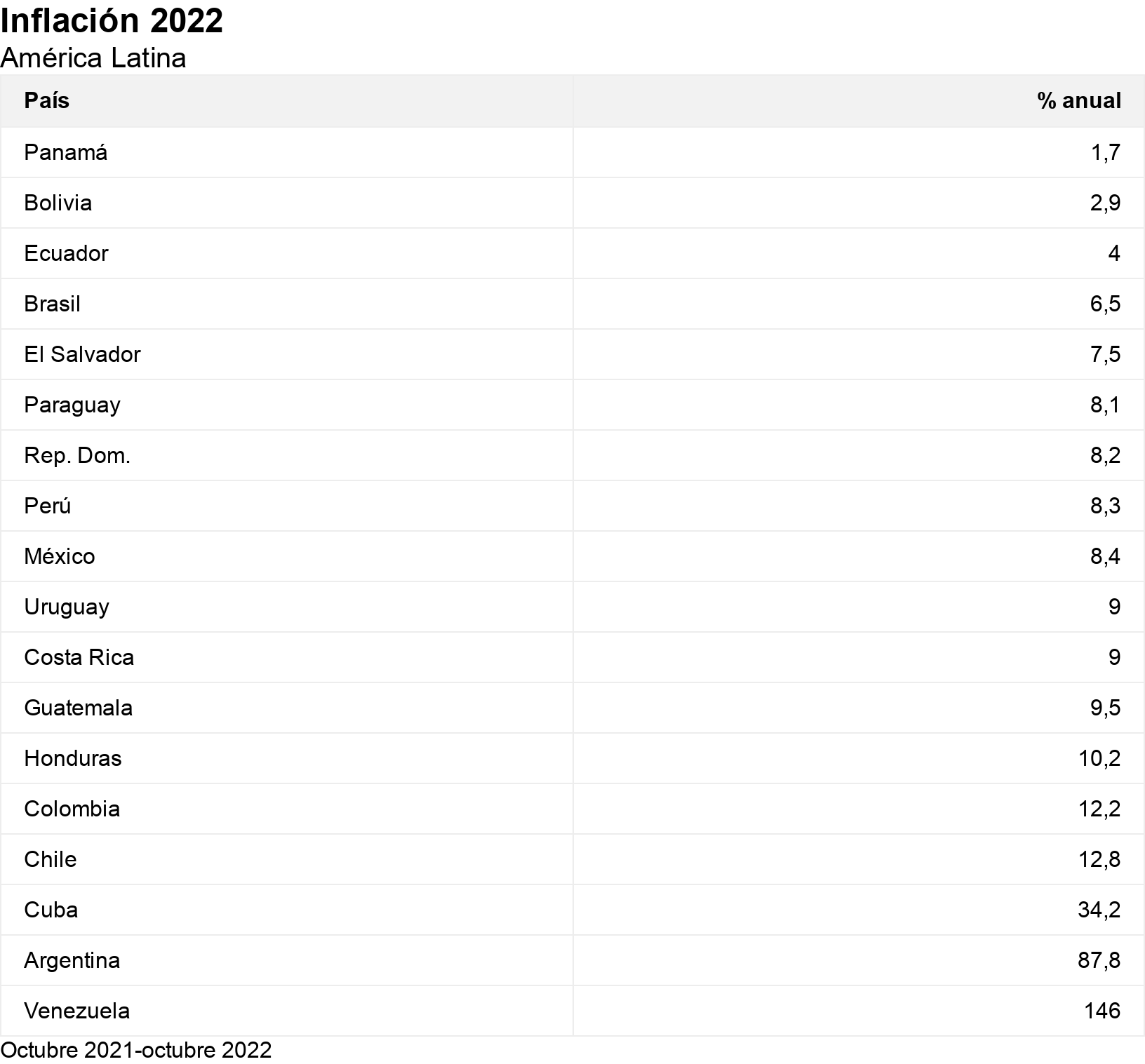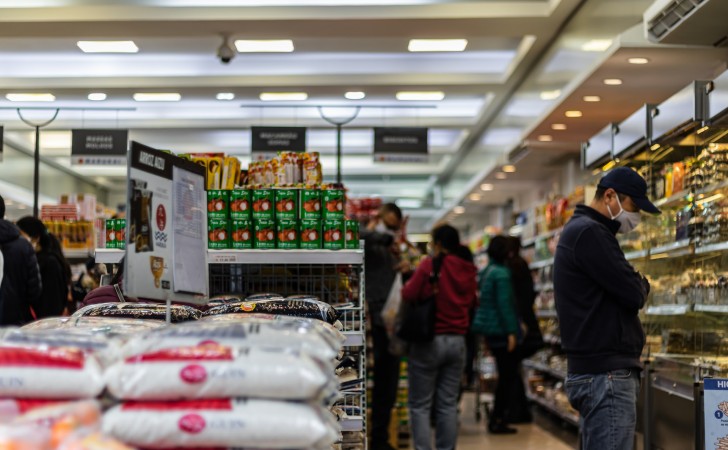
The inflation rate in December 2022 was 8.29%, a value slightly lower than that registered in November (8.46%), but still above the government’s target range (3%-6%).
This result is in line with the government projection made last July (8.5%), according to the National Institute of Statistics (INE).
The products that had a higher incidence in the index were food and non-alcoholic beverages (0.18%), housing (-0.47%) and transportation (0.12%). Within food and non-alcoholic beverages, the ones that most influenced were cereals and derivatives, frozen or refrigerated meat, milk, dairy products, eggs, and fruits and nuts.
In housing, the decrease in the electricity supply bill (-11.20%) due to the annual “UTE rewards” bonus, as well as the increase in rents (0.51%), stood out. In transportation, there was a decrease in the prices of cars (-2.42%), motorcycles (-2.55%) and plane tickets (-9.17%).
Inflation in Latin America
During the first half of the current year, inflation spiked around the world due to the war in Ukraine and rising food and energy prices, peaking at 8.4% in Latin America in June, the highest level since 2005, according to the Economic Commission for Latin America and the Caribbean (Cepal).
This regional maximum value does not include the countries that have “chronic inflation”: Venezuela, Argentina, Cuba, Haiti and Suriname. Rising fuel prices were a key factor in the cost-of-living surge, along with increased currency volatility and the impact of the covid-19 pandemic, which disrupted global supply chains and forced many authorities to issue more money than was previously available.
And projections suggest that in 2023 inflation will continue to decline.
This is how the inflation ranking in the region was:


















